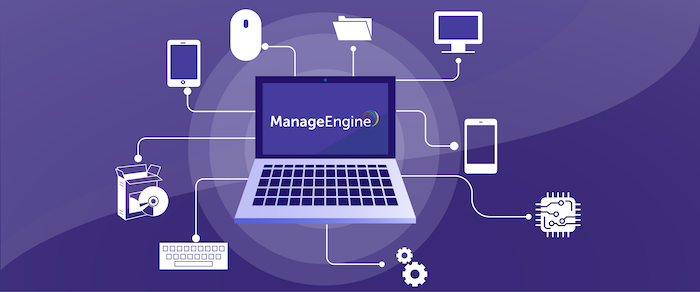Efficient asset management is vital for businesses of all sizes, encompassing the leadership of physical and non-physical assets. From office supplies to intellectual property, every asset plays a crucial role in the smooth functioning of a company. The key to optimizing profits and ensuring organizational success is making the right asset management software choices. By leveraging the power of software solutions, businesses can streamline their operations, reduce costs, and maintain a comprehensive record of their assets. This article explores asset management software’s significance and its benefits to businesses.
Simplifying Asset Management with Software
Asset management software provides businesses with a centralized platform to monitor, track, and maintain their assets. Whether it’s scheduling maintenance, tracking depreciation, or disposing of assets, the software streamlines these processes, eliminating the need for manual management. By automating asset management tasks, companies can optimize efficiency, reduce human error, and enhance overall productivity.
Comprehensive Asset Tracking and Reporting
One of the primary advantages of asset management software is its ability to provide a comprehensive view of all company assets. The software maintains a detailed record of each item, from physical equipment to intangible assets, including its condition, location, and lifecycle stage. This real-time data enables businesses to make informed maintenance, replacement, and budgeting decisions. Additionally, in the event of emergencies or losses, the software generates detailed reports, facilitating insurance claims and minimizing financial impacts.
Exploring Specialized Asset Management Software
There are various types of asset management software available, each catering to specific organizational needs. Three common categories include:
- Automated Data Collection Software: This software tracks and logs all asset-related processes, serving as a comprehensive time log. It captures information on asset usage, maintenance schedules, and performance metrics, enabling businesses to monitor asset utilization and identify areas for improvement.
- Inquisitive Software: Designed specifically for digital assets, this software assesses IT systems, hardware, software, and digital codes. It ensures digital assets’ integrity, security, and compliance, minimizing the risk of data breaches or system failures.
- Repository Software: This software focuses on organizing and archiving data files, facilitating easy access, uploading, and retrieval. It streamlines the management of digital assets such as documents, images, and multimedia files, improving collaboration and knowledge sharing within the organization.
Making Informed Choices for Asset Management Software
Before investing in asset management software, businesses should evaluate their specific needs and requirements. Consider the following factors when selecting the right software solution:
- Cost-Effectiveness: Assess the cost of the software and weigh it against potential savings and productivity gains. Consider the long-term benefits and whether the software aligns with the company’s budget and financial goals.
- Required Services: Identify the specific functionalities and services needed from the software. Determine whether it fulfills the organization’s asset management requirements, such as maintenance scheduling, reporting capabilities, and integration with existing systems.
- User Accessibility: Consider the number of users who will be utilizing the asset management program. Determine whether the software can be accessed internationally or is limited to local usage, based on the company’s operational scope.
By considering these factors, businesses can make informed decisions and choose the asset management software that best suits their unique requirements.
Frequently Asked Questions (FAQs)
Q: What is asset management software?
A: Asset management software is a digital solution designed to help businesses effectively monitor, track, and maintain their assets. It provides a centralized platform for managing both physical assets (equipment, vehicles, inventory) and non-physical assets (intellectual property, digital files, licenses). The software streamlines asset-related processes, improves efficiency, and enables businesses to make informed decisions regarding maintenance, replacements, and financial planning.
Q: How does asset management software enhance efficiency?
A: Asset management software enhances efficiency in several ways. It automates time-consuming manual tasks such as data entry, maintenance scheduling, and asset tracking, reducing human error and saving valuable time. The software provides real-time visibility into asset performance, condition, and location, allowing businesses to optimize asset utilization and make informed decisions. It also facilitates streamlined workflows, collaboration, and reporting, enabling teams to work more efficiently and proactively manage assets.
Q: Can asset management software benefit businesses of all sizes?
A: Yes, asset management software offers benefits to businesses of all sizes. While larger organizations may have a higher volume of assets to manage, smaller businesses can also benefit from improved asset tracking, streamlined maintenance processes, and accurate reporting. The software helps businesses maximize the lifespan of assets, reduce maintenance costs, prevent unnecessary purchases, and enhance overall operational efficiency.
Q 4: Is asset management software customizable to fit specific business needs?
A: Many asset management software solutions offer customization options to fit specific business needs. Businesses can tailor the software to align with their unique asset management processes, industry requirements, and reporting preferences. Customization may include configuring data fields, workflows, notifications, and integration with other software systems. This flexibility ensures that businesses can adapt the software to their specific asset management requirements and achieve maximum efficiency.
Q: Can asset management software integrate with existing business systems?
A: Yes, asset management software can integrate with existing business systems such as enterprise resource planning (ERP) software, customer relationship management (CRM) tools, and accounting systems. Integration allows seamless data flow between different systems, eliminates manual data entry duplication, and provides a holistic view of assets across the organization. This integration enhances efficiency by centralizing information and avoiding data silos.
Q: How does asset management software contribute to cost savings?
A: Asset management software contributes to cost savings in multiple ways. It enables businesses to proactively schedule and track asset maintenance, minimizing downtime and reducing the risk of costly repairs. Accurate asset tracking and reporting prevent loss, theft, or misplacement of assets, eliminating the need for unnecessary replacements or repurchases. The software also aids in optimizing asset utilization, ensuring assets are efficiently allocated and reducing the need for excess inventory or equipment.
Q: Is training required to use asset management software?
A: Most asset management software solutions are designed to be user-friendly, with intuitive interfaces and easy navigation. However, depending on the complexity of the software and the specific features being utilized, some level of training may be beneficial. Many software providers offer documentation, tutorials, and customer support to assist businesses in onboarding and utilizing the software effectively. Training sessions or workshops can be arranged to familiarize users with the software’s functionalities and optimize its usage.
Conclusion
Efficient asset management is a crucial aspect of running a successful business. By leveraging asset management software, organizations can streamline processes, reduce costs, and make informed decisions. From comprehensive asset tracking and reporting to specialized functionalities, the software provides valuable tools for managing physical and non-physical assets. Whether it’s a small business or a large corporation, investing in the right asset management software empowers businesses to enhance efficiency, optimize resource utilization, and drive long-term success.




